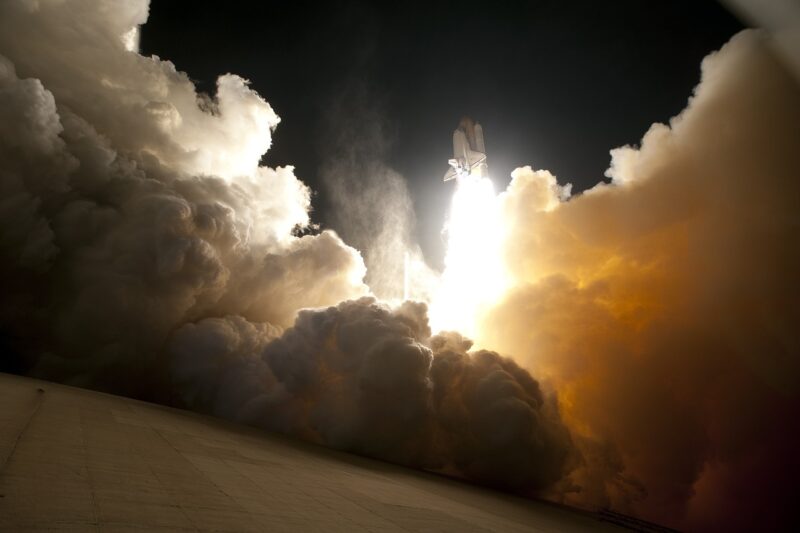How Rockets Overcome Gravity: The Basics of Thrust and Escape Velocity
November 16, 2024

Rockets are one of humanity’s most fascinating inventions, enabling us to explore space and reach other celestial bodies. Central to their operation is the ability to overcome the force of gravity, which is essential for launching spacecraft into orbit and beyond. In this article, we will delve into the fundamental principles of thrust and escape velocity, how rockets utilize these concepts to defy gravity, and why these factors are crucial for successful space exploration.
1. Understanding Gravity: The Force Behind Rocket Launches
Gravity is a natural phenomenon that attracts two bodies towards each other, a force that is particularly noticeable when discussing bodies as massive as planets. For Earth’s surface, gravity exerts a constant acceleration of approximately 9.81 m/s². This force pulls everything on Earth toward the center of the planet, creating a challenge for any vehicle attempting to ascend into the atmosphere. When it comes to rockets, understanding gravity is critical because they must generate enough force to not just counteract this pull, but also achieve a velocity that allows them to escape Earth’s gravitational influence entirely.
2. The Role of Thrust in Rocket Propulsion
Thrust is the force that propels a rocket upward, created through the expulsion of mass—often in the form of high-speed gases—via the rocket’s engines. According to Newton’s Third Law of Motion, for every action, there is an equal and opposite reaction. In the case of rockets, when propellants burn in the combustion chamber and are expelled out of the nozzle, the reaction produces thrust that pushes the rocket upwards.
The thrust must surpass the gravitational force acting on the rocket to initiate the ascent. Rocket engines can be further classified into two categories:
- Liquid Rocket Engines: These utilize liquid propellants, often consisting of a fuel and an oxidizer. The fuel is mixed with the oxidizer and ignited, resulting in the production of hot gases that are expelled out of the engine at high velocity.
- Solid Rocket Motors: These are filled with a propellant in solid form, which burns from the inside out upon ignition. Once ignited, solid rockets cannot be shut down or throttled easily, which makes them simpler but less flexible.
To launch successfully, a rocket’s thrust-to-weight ratio must be greater than one. This ratio measures the thrust produced by the rocket divided by its weight. If this value is above one, the rocket can accelerate upwards; if it is below one, the rocket will not rise.
3. The Concept of Escape Velocity
Escape velocity is another crucial concept in rocketry that refers to the minimum speed an object must achieve to break free from a planet’s gravitational pull without further propulsion. For Earth, this speed is about 11.2 km/s (approximately 25,020 mph). If a rocket can reach this speed, it can continue into space without additional thrust because it has enough kinetic energy to overcome the gravitational potential energy pulling it back to the planet.
The Formula for Escape Velocity
The escape velocity formula is derived from the principle of conservation of energy, combining kinetic and gravitational potential energy. The formula is:
v = √(2GM/r)
where:
– v = escape velocity
– G = universal gravitational constant (6.674 × 10⁻¹¹ N(m/kg)²)
– M = mass of the planet (for Earth, approximately 5.972 × 10²⁴ kg)
– r = radius of the planet (for Earth, approximately 6,371 km)
Essentially, to reach escape velocity, a rocket must convert a significant amount of chemical energy from its propellants into kinetic energy, achieved through rapid combustion and the expulsion of gases.
4. Thrust vs. Drag: Navigating Atmospheric Resistance
As a rocket ascends, it faces several forces that can impede its journey, the most significant being drag. Drag is the aerodynamic force opposing the motion of the rocket through the atmosphere. It increases with velocity and is affected by factors such as atmospheric density, rocket shape, and surface texture.
Rocket engineers must carefully design rockets to minimize drag while maximizing thrust. One of the strategies employed is to streamline rocket shapes: pointed noses reduce air resistance, while the use of powerful ignition systems generates sufficient thrust to combat both gravity and drag during the initial launch phase.
5. The Journey Beyond: Orbital Mechanics and Beyond
Once a rocket has achieved escape velocity, it must enter a controlled orbit to maintain a stable trajectory around the Earth or continue on a path towards another celestial body. Orbital mechanics, governed by Isaac Newton’s laws of motion and gravitation, dictate how a spacecraft moves through space, governed by the gravitational pull of the Earth and other celestial bodies.
Within this phase, the rocket’s engines often perform orbital insertion burns to adjust its speed and trajectory. This fine-tuning is crucial for missions aimed at planetary rendezvous or docking with space stations.
6. Conclusion: The Engineering Marvel of Rocketry
The science and engineering behind rockets exemplify human ingenuity in overcoming one of nature’s most formidable forces: gravity. Through the principles of thrust and escape velocity, engineers are able to design and launch spacecraft that not only reach the heavens but also pave the way for future exploration.
As we continue to advance our capabilities in rocketry—whether for satellite deployment, crewed missions, or interplanetary exploration—we breach the very limits of what was once deemed impossible. Rockets do not just defy gravity; they unlock humanity’s dreams of reaching the stars, making extraordinary advances in our quest for knowledge in the universe.








